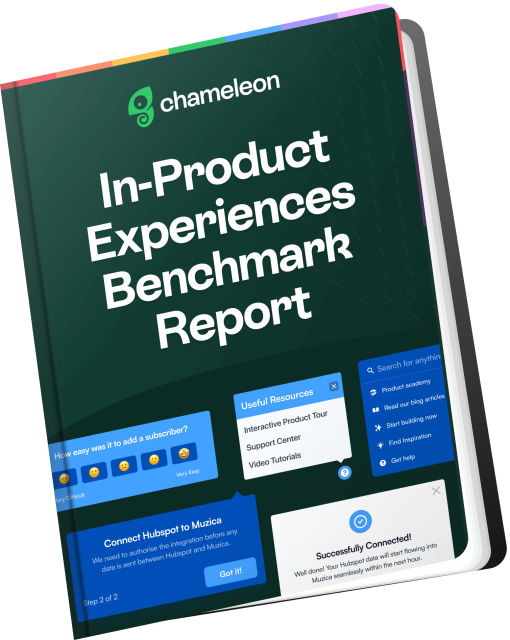We hope you’ve got some inspiration from the examples and our detailed guide on how to run effective surveys. So, the time has come to learn how to measure customer satisfaction and manage all the feedback you get.
Let’s dive right in.
In this chapter
How to calculate the CSAT score
The CSAT score measures the level of satisfaction for a specific experience. Typically, the five levels of satisfaction are:
Very unsatisfied (1)
Unsatisfied (2)
Neutral (3)
Satisfied (4)
Very satisfied (5)
And here’s the formula for calculating the score based on your results:

CSAT score will show you the percentage of your satisfied customers.
What is a good CSAT Score?
In general, a CSAT score of 80% is considered to be a good indicator of customer success, although it will vary by industry.
Keep in mind that customer satisfaction surveys are useful for grading different parts of your product and/or business, as they will shed light on specific issues, challenges, and pain points your customers might be facing.
The best way to evaluate your CSAT score is to compare your results to companies within your category and industry.
For example, you can evaluate the CSAT sentiment by looking into the rating scale. For example, according to the latest Benchmark CS Report from Gorgias, the average CSAT rating for the design industry is 4.5/5.
And here’s a little sneak peek into our data from the latest Chameleon Benchmark Report – among Chameleon customers, primarily being in the B2B SaaS sphere, the overage CSAT score among their end-users is 80%.
Keep in mind that a CSAT score is rarely going to be 100%. A percentage of customers is going to be unsatisfied on some level, and that’s exactly why collecting feedback particularly from them is important for your further improvements. Our data shows that 28% of Detractors will leave a comment on a survey. For complete insights, download our full Benchmark Report.

Download the In-Product Experiences Benchmark Report
Improve your in-app messaging and scale self-serve success with data and insights from 300 million user interactions with Chameleon Experiences. We'll send the Report to your inbox!
How to manage feedback and evaluate results
Calculating the CSAT score is the best way to evaluate results from quantitative research. It will show you the numbers and percentages of both satisfied and unsatisfied customers. From there, you can extract insights and come up with ways for improvement.
But what about qualitative data? One of the best tools you can use to manage and evaluate qualitative results is sentiment analysis.
As Riley Maguire from MonkeyLearn explains it, sentiment is the additional "dimension" that applies to every piece of feedback.
“Sentiment is a dimension you can apply to the text of your feedback. We like to think of it as an additional column on the spreadsheet with all your responses that says "positive" or "negative". The sentiment is usually something we think about casually, i.e. feedback about bugs is negative. But the benefit of sentiment analysis is that when it's an actual tag or category, you can then use it to slice and dice your data. Now that your qualitative text has this sentiment level on it, you can more easily gain an appreciation of what patterns, topics, or keywords come about in negative feedback, as opposed to positive. So, sentiment is a critical piece on the way to getting insights.”
– Riley Maguire, Product Marketing Manager at MonkeyLearn
The good thing about CSAT surveys is that you can easily adjust them to your needs. For example, at MonkeyLearn, one of the ways they use a variation of CSAT is to evaluate user onboarding experience.
“We use adaptations of CSAT for particular things, but at much smaller scales. For example, we use something similar at the end of onboarding for our business customers to get the critical feedback we need on that service.”
– Riley Maguire, Product Marketing Manager at MonkeyLearn
Getting critical feedback and analyzing the results brings us to the next step – extracting the most important insights and deciding how to act upon them.
Next steps: Act upon your survey insights
Once you gather all the results, analyze data, distill information, and pull out the insights, the next step is to put the insights into practice.
A continuous feedback collection will help you uncover hidden truths about customer success and satisfaction, as well as their pain points and challenges.
“It may be cliche to say that you need to continuously collect feedback, but it's the kind of cliche that eats your lunch if you don't respect it. It's in the same vein of ‘always be talking to your customers’.”
– Riley Maguire, Product Marketing Manager at MonkeyLearn
What happens if you don't collect feedback regularly? Riley explains it further:
“You start taking strategic decisions based on gut feelings, or hunches, and that can snowball into building the wrong things and churn. But, it also has more interpersonal implications when the gut feelings of the strongest voice or highest authority are accepted and other "guts" are left aside. Getting that new data from the point of the customer relationship can do wonders for clear thinking and focusing a group. So, the continuous collection is like oxygen for a team, and it needs to happen on a frequent enough basis so that your customer's requests don't go stale.”
– Riley Maguire, Product Marketing Manager at MonkeyLearn
When you find out what your customers think, how they feel, and which new features they'd prefer, you can then add more development ideas, run different experiments, and improve the user experience.
The insights can also help you prioritize features, simplify onboarding flow, resolve the support tickets quicker, solve the exact problems, build a sustainable self-serve model, and much more.
To learn more about discovering hidden insights from customer feedback and all the ways you can use them to fight churn, watch the recording of the webinar hosted by our Head of Marketing, Kirsty Finlayson, and Riley Maguire from MonkeyLearn.

Webinar Recording: Find Hidden Insights in Survey Feedback
Learn all about the good vs. bad survey questions, understand the sentiment behind your user feedback (and why your passive comments are golden), and discover a new way to look at data through the lens of aspect-based sentiment analysis.
Conclusion
Let’s wrap this all up.
With customer satisfaction surveys you can:
Identify pain points in customer service and resolve them faster
Address issues before they evolve into serious problems
Consistently meet and exceed customer expectations
Build and nurture strong relationships with prospects and users
Create an attractive customer experience program over time
All this, by continuously collecting customer feedback through research, discovery, and delivery phases of your product development process.
We can’t stress enough how important it is to start collecting feedback early on to measure customer satisfaction over time – starting from a Beta phase, through MVP iterations, product-market fit adjustments, and product growth stages.
Open and honest feedback you receive along the way will provide you with invaluable insights that you can work upon, make improvements, and put your learnings back into the development process to build more impactful products that your customers will love.

Do users love your product?
Deploy a feedback survey in minutes and find out!




